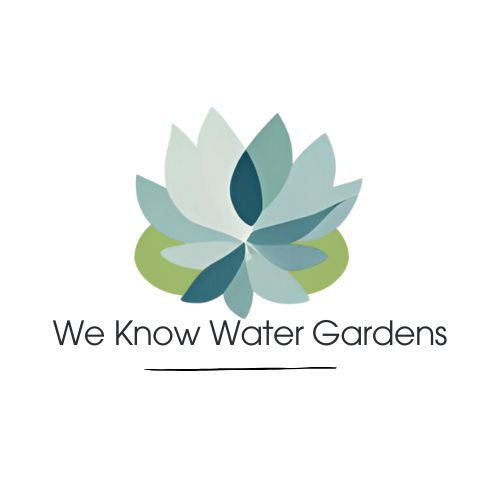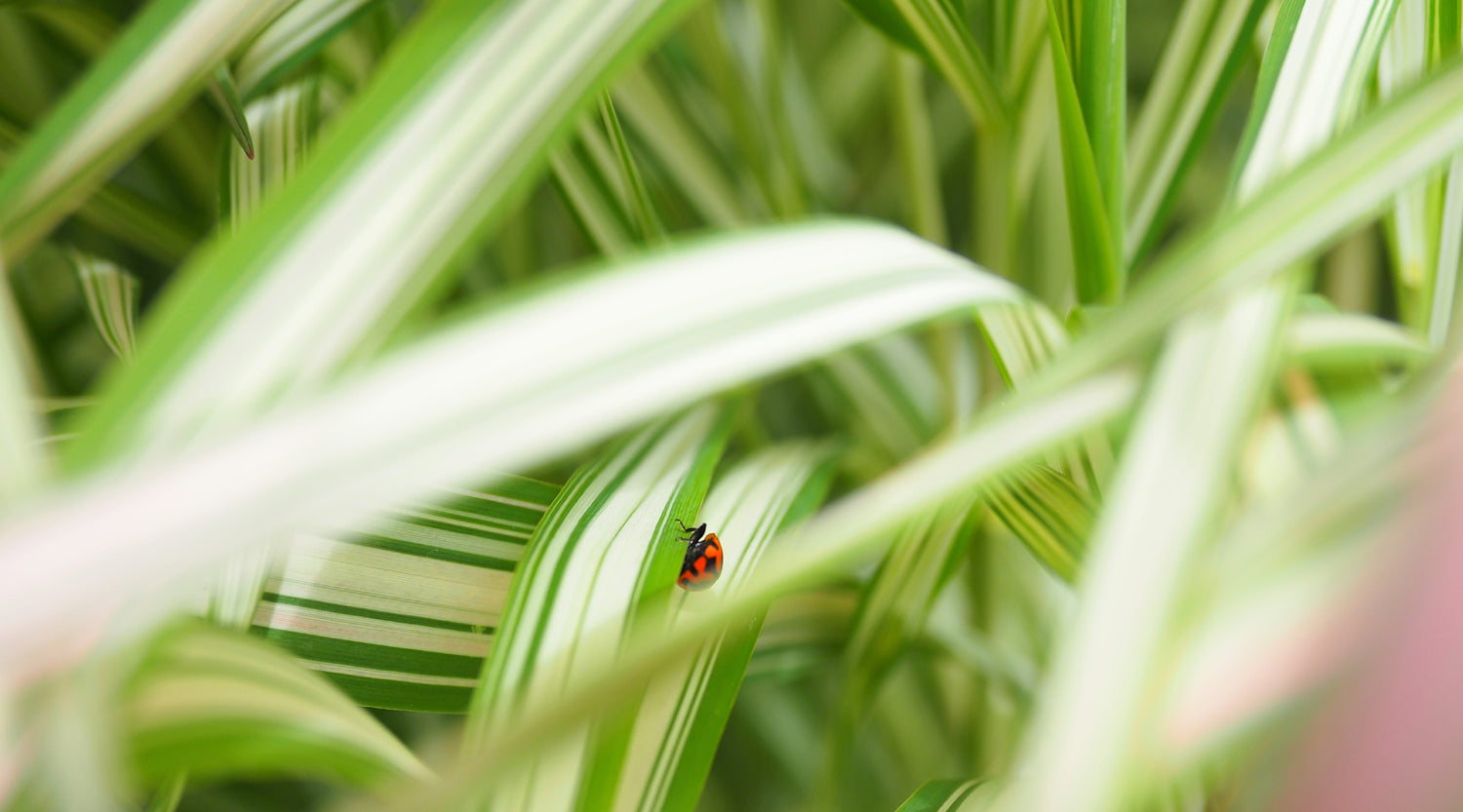Home
>
We Know Water Gardens Blog
>
From Oxygenators to Algae Control: The Benefits of Submerged Plants in Your Pond
From Oxygenators to Algae Control: The Benefits of Submerged Plants in Your Pond
on Jan 29, 2024
Submerged plants play a vital role in maintaining the health and balance of your pond ecosystem. From oxygenating the water to controlling algae growth, these plants offer a host of benefits that can improve the overall quality of your pond. In this article, we will explore the various advantages that submerged plants can bring to your pond and how they contribute to creating a thriving aquatic environment.
One of the key benefits of submerged plants is their ability to release oxygen into the water, which is essential for the survival of fish and other aquatic organisms. They also act as natural filters, removing excess nutrients and preventing the growth of algae. By shading the water surface, submerged plants reduce sunlight penetration, making it difficult for algae to thrive.
Furthermore, these plants provide hiding places and spawning grounds for fish, as well as shelter for beneficial bacteria that help break down organic matter. They also aid in maintaining water clarity and preventing erosion by stabilising the pond bottom.
Whether you have a small backyard pond or a large water feature, incorporating submerged plants can significantly enhance its beauty, water quality, and biodiversity. So, dive into the world of submerged plants and experience the multitude of benefits they bring to your pond ecosystem.
Benefits of submerged pond plants for oxygenation
The oxygenation provided by submerged plants is crucial for the overall health and well-being of your pond. As mentioned earlier, through photosynthesis, these plants release oxygen into the water. This oxygen is essential for the survival of fish, invertebrates, and other aquatic organisms. Without sufficient oxygen, these organisms would struggle to thrive and may even die.
The presence of submerged plants ensures a constant supply of oxygen in the water, even during periods of high demand. This is particularly important during warm summer months when oxygen levels can decrease due to increased metabolic activity. The oxygenation provided by submerged plants helps maintain a stable and healthy oxygen-rich environment, supporting the diverse aquatic life in your pond.
Furthermore, the oxygenation process also helps break down organic matter in the water. As submerged plants release oxygen, they stimulate the growth of beneficial bacteria that break down organic waste, such as decaying leaves and fish waste. This natural decomposition process, fueled by the oxygen released by submerged plants, helps keep the water clean and free from harmful pollutants.
Submerged pond plants as natural algae control
Algae growth is a common problem in ponds, often leading to murky and unsightly water. Excessive algae can deplete oxygen levels, suffocating fish and other aquatic organisms. Fortunately, submerged plants offer a natural and effective solution to control algae growth.
By absorbing excess nutrients from the water, submerged plants limit the availability of nutrients that algae feed on. Nitrogen and phosphorus are two key nutrients that algae require for growth. When submerged plants absorb these nutrients, they starve the algae, preventing its overgrowth.
Additionally, by shading the water surface, submerged plants reduce the amount of sunlight that reaches the lower layers of the pond. Algae thrives in sunlight, so by limiting its access to sunlight, submerged plants hinder its growth. This shading effect not only controls algae but also helps maintain water clarity and prevents the formation of unsightly green or brown blooms on the water's surface.
Our top 5 submerged plants for Australian ponds
When it comes to choosing submerged plants for your pond, there are several options to consider. Different types of submerged plants offer varying benefits and aesthetics. Here are some popular choices for Australian ponds:
1.Brahmi (Bacopa Monnieri): This fast-growing submerged plant is an excellent choice for oxygenation and algae control. Brahmi features a small flower and is capable of flowering under the water.
A lovely pond plant when grown with a hardy water lily (see image above).Submerge to a depth of 20cm.
2. Water Hyssop (Bacopa caroliniana): Another popular choice for ponds. Water Hyssop is a useful plant for stripping nutrients from pond water. Nutrients including nitrates and phosphates are the major cause of algae in a pond. So, if you want to get rid of algae, then Water Hyssop is a water plant that you must have!
Hyssop is a useful plant for stripping nutrients from pond water. Nutrients including nitrates and phosphates are the major cause of algae in a pond. So, if you want to get rid of algae, then Water Hyssop is a water plant that you must have!
3. Pink Rotala: As a fast-growing plant, it is also useful in controlling algae as it competes for the nutrient in pond water which slows or even stops algae growth creating a clean and clear water garden. Submerge to 30cm
4.Upright Water Milfoil (Myriophyllum crispatum): Watermilfoil is a versatile submerged plant that helps oxygenate the water and provides a habitat for fish. It has delicate, feathery leaves that add a graceful touch to your pond. Submerge to a depth of 20cm.
5. Water lily (Nymphaea spp.): Although not a fully submerged plant, water lilies have floating leaves that provide shade and reduce sunlight penetration. They add beauty to your pond while aiding in algae control.
How to choose and introduce submerged plants to your pond
 Choosing the right submerged plants for your pond depends on various factors, including the size of your pond, sunlight exposure, and personal preferences. Consider the following when selecting and introducing submerged plants:
Choosing the right submerged plants for your pond depends on various factors, including the size of your pond, sunlight exposure, and personal preferences. Consider the following when selecting and introducing submerged plants:
1. Pond size: Determine the size of your pond and choose plants that are suitable for its dimensions. Some submerged plants, such as Dwarf Papyrus (Cyperus papyrus nana) and Running Marsh Flower (Villarsia reniformis), are excellent for smaller ponds, while others, like Upright Water Milfoil, are more suitable for larger ponds.
2. Sunlight exposure: Assess the amount of sunlight your pond receives throughout the day. Some submerged plants thrive in full sun, while others prefer partial shade. Select plants that are compatible with the sunlight conditions in your pond.
3. Planting depth: Different submerged plants have different planting depth requirements. Some plants can be anchored in shallow water, while others need to be submerged at greater depths. Ensure you choose plants that can be properly situated in your pond.
When introducing submerged plants to your pond, it's important to acclimate them gradually. Start by placing the plants in a container filled with pond water and allow them to adjust to the temperature and water conditions for a few days. Then, carefully plant them in their designated spots, taking care not to damage the delicate roots. Over time, the submerged plants will establish themselves and contribute to a healthier pond ecosystem.
Care and maintenance of submerged pond plants
To ensure the continued health and vitality of your submerged plants, proper care and maintenance are necessary. Here are some essential tips:
1. Pruning: Regularly trim and remove any dead or decaying foliage to maintain the overall health of the plants. This prevents the accumulation of organic matter in the water, which can lead to poor water quality.
2. Feeding pond plants: While submerged plants generally obtain nutrients from the water, you can supplement their growth with slow-release aquatic plant fertilisers. Follow the instructions carefully to avoid over-fertilising, which can lead to excessive algae growth.
3. Monitoring: Keep an eye on the growth of submerged plants and ensure they are not overcrowding the pond. Overgrown plants can impede water flow and create an imbalance in the ecosystem. Thin out the plants if necessary to maintain a healthy balance.
4. Winter care: In colder regions in Australia, submerged plants may go dormant during winter. Before the first frost, move potted plants to deeper water or bring them indoors to protect them from freezing. Maintain your ponds pump and filtration to help prevent freezing over.
By providing the necessary care and maintenance, you can enjoy the full benefits of submerged plants in your pond year-round.
Other benefits of growing submerged plants in ponds
Apart from their oxygenating and algae-controlling properties, submerged plants offer additional benefits to your pond ecosystem. These include:
1. Enhanced biodiversity: Submerged plants provide a habitat for a diverse range of aquatic organisms, including fish, invertebrates, and beneficial bacteria. They contribute to the overall biodiversity of your pond, creating a thriving and balanced ecosystem.
2. Improved water quality: By absorbing excess nutrients and filtering the water, submerged plants help improve water quality. Clear and healthy water enhances the visual appeal of your pond and creates a more pleasant environment for both you and your aquatic inhabitants.
3. Natural aesthetics: Submerged plants add beauty and natural aesthetics to your pond. Their graceful foliage and vibrant colours create a visually appealing underwater landscape, enhancing the overall ambiance of your outdoor space.
4. Ecological balance: Submerged plants play a crucial role in maintaining the ecological balance of your pond. They contribute to the delicate equilibrium of nutrient cycles, oxygen levels, and overall ecosystem stability. By incorporating submerged plants, you actively participate in the preservation and conservation of natural habitats.
The benefits of growing submered pond plants in your backyard pond or water garden
Incorporating submerged plants into your pond offers a multitude of benefits. From oxygenating the water to controlling algae growth and enhancing biodiversity, these plants play a vital role in maintaining a healthy and balanced pond ecosystem. Whether you have a small backyard pond or a large water feature, the addition of submerged plants can significantly enhance its beauty, water quality, and overall ecological value.
So, dive into the world of submerged plants and experience the multitude of benefits they bring to your pond ecosystem. From oxygenators to algae control, these plants offer a natural and sustainable solution for maintaining a thriving aquatic environment. Embrace the beauty and functionality of submerged plants and create a pond that not only captivates the eye but also supports a diverse and vibrant aquatic life. Your pond will thank you for it.
© weknowwatergardens 2024
Share


